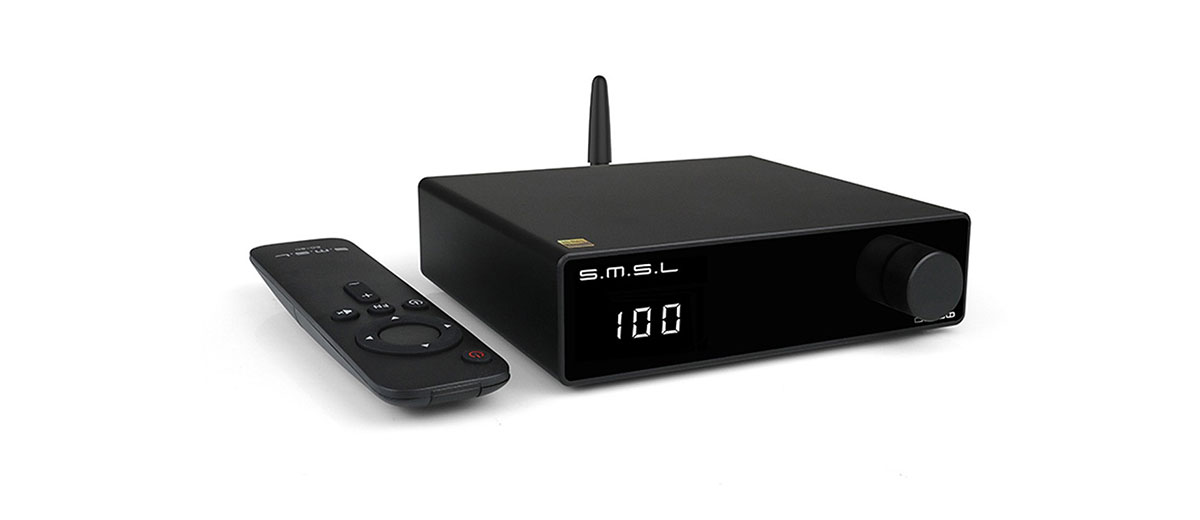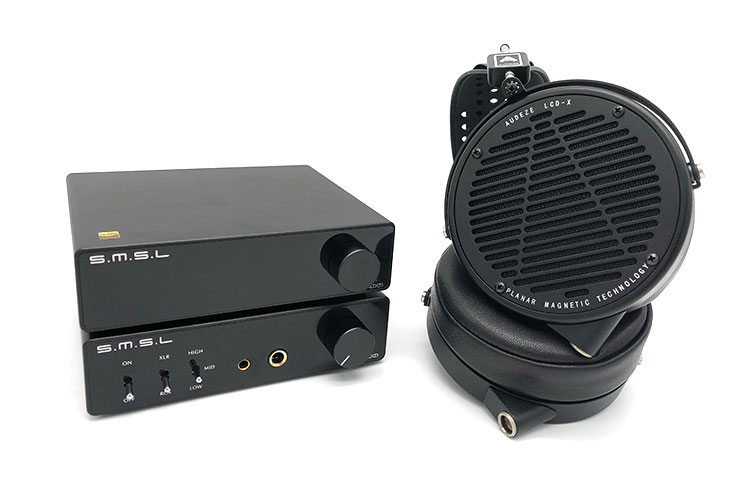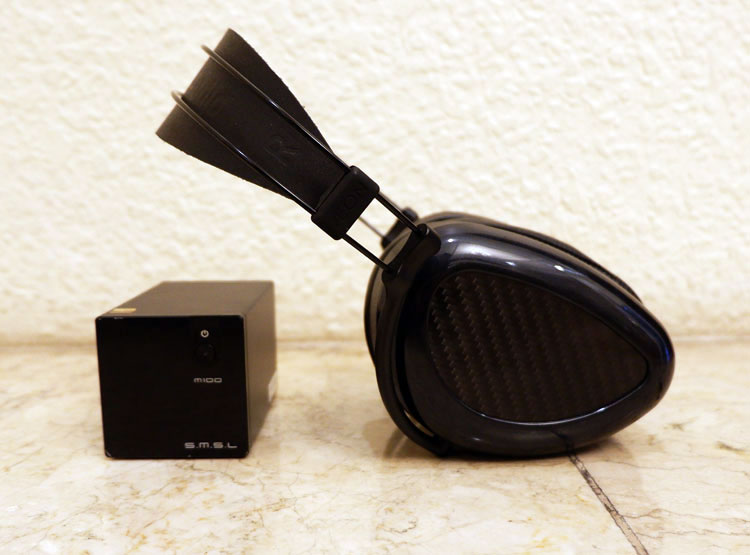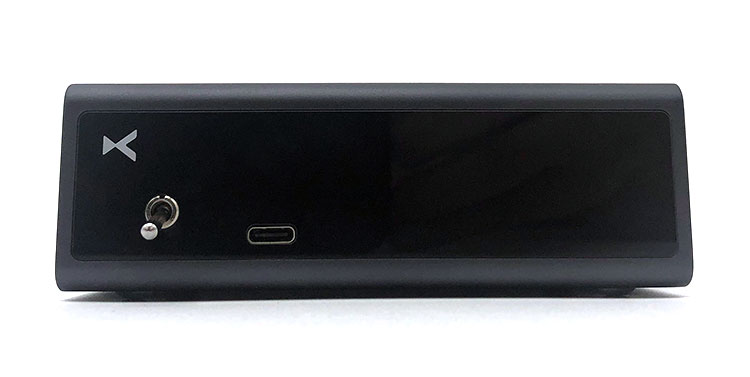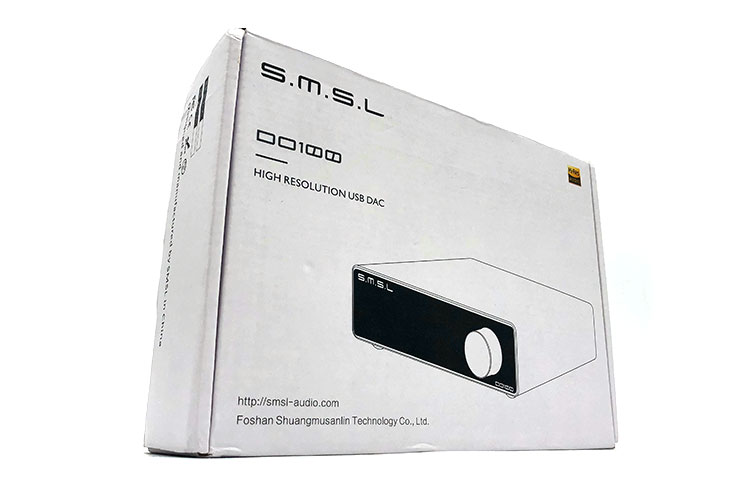Synergy
Pairings
To properly judge the leanings and technicalities of the DO100, I paired it with its companion amplifier the HO100, and with the more insightful yet brighter THX AAA 789 from the company Drop.
Between the two amplifiers, the HO100 brought out a more pleasing and tamed performance that never misbehaved in the higher registers allowing me to believe that it is the better pairing if expansive staging width is not a requirement.
The THX AAA 789 is a bit too lean and attacking, introducing increased sparkle in the treble region that is more than I prefer for longer listening sessions. Although, it revealed that the DO100 is capable of nicer textures in the vocal region and extended the stage width beyond what the HO100 offered.
Using the Audio Technica ATH-ADX5000 with the SMSL stack, a pleasantly natural stage is achieved together with snare drums and violins that aren’t too thin and laser-focused.
While changing to the Audeze LCD-X, the pairing with the THX AAA 789 utilized the extra microdetails and pulled into focus the strumming of deeper bass lines.
Select Comparisons
SMSL M100 MKII
$93.99
Technical
With wide applicability in terms of music decoding capability, the M100 MKII is spec’d similarly with up to 32bit/768kHz of PCM and Native DSD512 support. It is being handled by an XMOS XU208 passed on to a singular ES9018Q2C DAC chip by ESS.
Taking analog signal protection up a notch, the M100 MKII was designed with two separate layers of PCB, fully separating digital and analog. And as the smaller unit, it is also more transportable not needing wall power when using the USB input.
Design
Coming in either blue or black, the M100 MKII can either be as stealth-looking as the DO100 in black or more calling in blue. It also has a smaller footprint but since it has a boxy case is the taller of the two.
With a similar front mostly covered in a reflective black panel, the M100 MKII has a small cutout toward the top where the lone control button is present. Though separating the level of refinement is the blue 7 segment display used that is quite incoherent with the fascia.
Less exciting towards the rear of the device, the M100 MKII has fewer bells and whistles having limited inputs and outputs.
Performance
Compared to the implementation of the DO100, the low-end extension of the M100 MkII is simply lacking highlighting the bloated main body of reverberations. It has a similarly linear timbre that rises into a dispersed image blurring easier with busier recordings.
Its neutral midrange is similarly not pushed further away or moved forward following a generally even approach to placement. However, with smoother microdetails and characters that tend to sound hollow, vocals and instruments sound less pronounced and intentional.
Snare drums aren’t as refined in creating fetching strokes tending to be more blunted in energy than the livelier appeal on the DO100. Both present trombones with a sharp and thin presence but the M100 MKII lags behind DO100 in separation and air.
Directionality and layering are more than enough but the walled stage is a confining factor. The M100 MKII creates images smaller in comparison and does not help in increasing the soundscape.
xDuoo MU-601
$129.00
Technical
Having one of the more unique combinations of I/O in the budget DAC segment, the MU-601 can be set up with up to two USB-C connections and pass a digital signal through a coaxial output or analog frequencies using either of its two pairs of single-ended RCA. It is also conveniently designed with a physical switch to change between USB modes.
The DAC and USB chip installed is the ES9018K2M from ESS and XU208 from XMOS converting any music library as long as it is not higher than 384kHz for PCM and DSD256. Injecting its flavor into the sound is the intentional use of a Japanese Rubycon capacitor for a smoother and warmer sound profile.
Design
With a slimmer chassis in depth and width, this tiny converter from xDuoo gets ahead if space consumed is a factor. The sandblasted aluminum used in the MU-601 is designed to flow towards the user unlike the wrapped effect on the DO100.
Since there is a short toggle switch and USB port in front, the glass panel is more exposed to accidental exposure to fingerprints. What’s behind the black glass is a small screen used to display the sampling rate.
Performance
Both DACs performed well in the extension of the bass although comparatively there is a slight edge in energy with the DO100. Where the two separate is in the punch and texture present in the DO100 that complements well with the rest of the mix.
Slightly staged-in, the midrange is somehow more relaxed than DO100’s immersive scale in the upper regions having more oomph and air. Although, the MU-601 can catch up in terms of detail retrieval together with its flowy resonance.
But with vocal-heavy tracks, it loses finesse giving an edgy breath and more abrupt breaks. Guitars and instruments however receive a sense of sweetness and welcome amounts of clarity.
If there is an area the MU-601 impressed the least when compared is the treble region lacking in character and appears colder. Cymbals weren’t able to portray the extremes and are emerging tinier although in return it is not reaching the same levels of shimmer in the DO100 that could get bright depending on the amplifier.
Equally performing in imaging, where the two separate is in staging capability with the lesser width of the MU-601, especially in the vocal region. Instruments on the other hand are given equal distribution of space and utilize the area available.
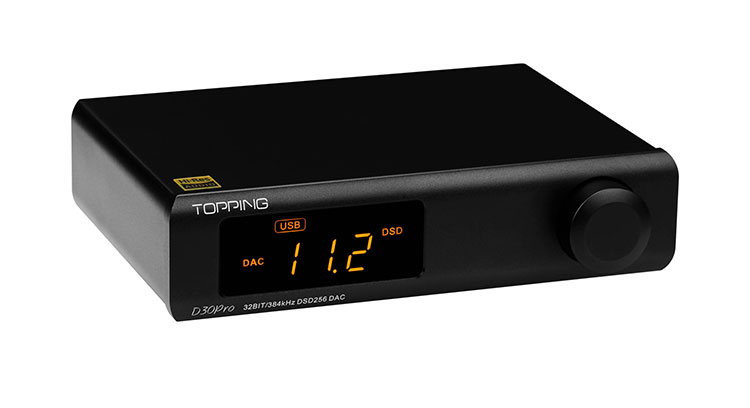
Topping D30 Pro
$399.99
Technical
With the popularity of AKM and ESS chips before the release of the D30 Pro, Topping went back to the drawing board and shifted their attention to Cirrus Logic. The D30 Pro has a total of four CS43198 digital to analog converters outputting 4 balanced signals per channel.
While the higher number of DAC chips may seem advantageous, it is somehow limited in support of higher sampling rates as it will only accept PCM signals of up to 32bit/384kHz and Native DSD256. Also lacking Bluetooth, the D30 Pro catches up functioning as a preamplifier if needed and the presence of a balanced XLR.
Design
This conservatively designed DAC from Topping almost measured the same with only a few millimeters of difference in height and width. Near the DO100, the main describing character is a tossup between a flat glass panel and a sloping aluminum slab for choice.
With a seven-segment display and volume knob in both units, the D30 pro hides its orange-lit screen less although it has the bigger volume wheel in comparison. Turning the knob is more crisp and positive feeling while the one on the DO100 is on the gentler side.
Having more space towards the rear thanks to a slightly wider chassis, there is more definition in the spread of I/O.
Performance
Bringing the two DACs side by side, I was impressed with how close the two got in resolution. Inspection revealed their differences but the ultimate deciding factor for me in choosing between these two DACs is use-case as the D30 Pro is richer while the DO100 is stricter.
The mid-bass of the D30 Pro is more pronounced with a matching sense of bite, although directly against the DO100, it is slightly lacking in cohesion mostly heard on busier tracks as it prioritizes grandeur. But for those looking for that last bit of low-end rumble, the D30 Pro was given the more dexterous and appealing extension.
Without sounding exaggeratedly warm or colored, vocals and strumming of the guitars alike on the D30 Pro are the more inviting and weighted of the two. With an easier time in untangling shaky vibrato, there is a slight superiority to the capability of the D30 Pro to retrieve microdetails.
Being more animated in the upper midrange, it takes less amount of time for the DO100 to be fatiguing on female vocals with high-pitched tendencies.
The better extension is immediately noticeable in the treble region giving chimes and cymbals well-deserved dynamism. So, while it is portraying smaller pictures than the DO100 but with detail retrieval that is closely performing, sudden spikes in vitality are better placed.
Where the two finally agrees is in the honest stage presence. If there is a minor difference it’s mostly in the more uniform image sizes on the DO100 since the D30 Pro sometimes pulls up or down a picture depending on the song.
Our Verdict
For a maturing enthusiast that is developing a taste for neutral-sounding gear and those that have a selection of amplifiers to play around with, the SMSL DO100 DAC is a respectable performer in its class offering a keen balance of technicalities and value for money.
Treble-sensitive audiophiles will have a better experience pairing this source to a warmer or less treble-forward amplifier to keep everything nicely balanced.
I can only think of the few areas where I found microdetails to be lacking as a minor gripe. And yet, it easily regains back attention having a well-rounded stage presence and precise imaging.
SMSL DO100 DAC Technical Specifications
- DAC: ES9038Q2M * 2
- Input: USB/Optical/Coaxial/Bluetooth
- Output Amplitude: 4.0Vrms (XLR), 2.0Vrms (RCA)
- THD+N: 0.00008% (-121dB)
- Output Impedance: 100W
- USB Transmission: USB1.1, USB2.0 (Asynchronization)
- Playback: 32bit/768kHz PCM, Native DSD512
- Bluetooth 5.0: LDAC/aptX-HD/aptX/SBC/AAC
- Size: 150x128x39mm (WxDxH)
- Weight: 560g

